Want a greener, healthier lawn? It all starts with knowing how and when to fertilize your lawn.
In this guide, we’ll walk you through a simple 5-step process for fertilizing your lawn, explain how timing and grass type affect results, and help you choose the right fertilizer for your lawn’s needs. These tips will set you up for success all season long!
Why Should You Fertilize Your Lawn?
Fertilizing will make your lawn dense and improve growth. However, to maintain its health, you must keep up with a good fertilization schedule. This will ensure that it will be less likely to have diseases, weeds, and pests!
Another reason to fertilize your lawn is to help your yard withstand the elements. If your kids like to play on the lawn or your lawn goes through harsh weather conditions, fertilizing your lawn regularly will make it grow stronger.
Now that you know some of the “why”s behind fertilizing your lawn, below is the “how”. Here are 5 steps on how to fertilize your lawn.
When to Fertilize Your Lawn Based On Your Grass Type
Timing is everything when it comes to fertilizing your lawn, and it all depends on the type of grass you have.
- Cool-season grasses (like Kentucky bluegrass, ryegrass, and fescue) thrive with fertilization in early spring and again in early fall, when temperatures are milder.
-
Warm-season grasses (like Bermuda, Zoysia, and St. Augustine) benefit most from fertilizing in the late spring through summer, when they grow most actively.
Understanding your grass type will help you fertilize at the right time to maximize growth, color, and resilience.
Choosing The Best Fertilizer For Grass
Organic vs. Synthetic Fertilizers
There are two main fertilizers to choose from for your grass to choose from; organic and synthetic
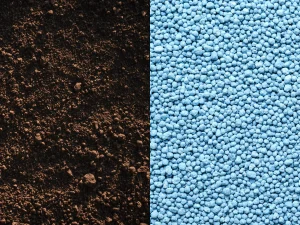 Organic fertilizers (like compost, manure, or seaweed-based blends) improve soil quality over time and are more environmentally friendly.
Organic fertilizers (like compost, manure, or seaweed-based blends) improve soil quality over time and are more environmentally friendly.
Synthetic fertilizers act faster and are often more targeted, but they can lead to runoff if over applied.
Choosing the best fertilizer for your grass depends on your goals for your lawn. For long-term soil health, organic fertilizer is for you. However, if you’re looking for a quick green up, we recommend synthetic fertilizer.
Understanding the NPK Ratio
Every fertilizer bag is labeled with a set of three numbers called the N-P-K ratio, representing Nitrogen (N), Phosphorus (P), and Potassium (K).
- Nitrogen (N) promotes lush, green growth.
-
Phosphorus (P) supports strong root development.
-
Potassium (K) helps your lawn resist disease, heat, and drought.
A balanced fertilizer like 10-10-10 is great for general use, while high-nitrogen blends are best for boosting green color.
How To Fertilize Your Lawn In 5 Steps
1. Prepare The Lawn For Fertilizing
First, ensure that you are prepping your lawn a couple of days before you are planning to fertilize it. Three to four days before you plan to fertilize your lawn, go ahead and mow it. Once you have mowed your lawn, remove any weeds so that you are not feeding them with fertilizer.
This is a good time to dethatch a lawn if necessary, too. Dethatching is removing all the dead grass clippings and debris from your lawn. You can use a dethatching machine or a dethatching rake, like the ones sold at Johnson’s Ace Hardware
You should water your yard the night before fertilizing it; otherwise, the grass won’t absorb the nutrients.
2. Apply The Fertilizer
The next step is to apply the fertilizer. There are different types of fertilizers and spreaders to use. There are fertilizer bags you can spread, but there are also liquid fertilizers that are great for those dry patches.
Spreading fertilizer evenly is best accomplished with a spreader rather than by hand. For smaller lawns, we suggest using a handheld spreader. However, for a larger lawn, it is easier to get a push-along spreader that will make the job quicker.
Once you have purchased your fertilizer and spreader, start covering your lawn with the fertilizer. The next step to fertilizing your lawn is to water after application.
3. Water Your Lawn After Fertilizing
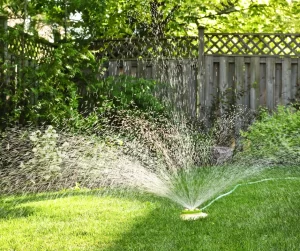 Once the fertilizer is spread evenly across the yard, grab a hose and water your lawn. This will help the fertilizer absorb better and prevent the chemicals from harming your lawn.
Once the fertilizer is spread evenly across the yard, grab a hose and water your lawn. This will help the fertilizer absorb better and prevent the chemicals from harming your lawn.
You can also strategically fertilize your lawn before it is about to rain. Another pro tip is to fertilize your lawn when it is cloudier or towards the evening to avoid baking your lawn with warm water.
4. Check The Lawn After Fertilization
After you have fertilized your lawn, the next step is to check your lawn. Check your lawn over the next couple of weeks for any weeds or patches in your lawn. You can pull out these weeds and use fast-growing grass seeds to fill in those spots.
5. Begin The Fertilizing Cycle Again
Finally, ensure you fertilize your lawn regularly to keep it healthy, strong, and green. When you buy fertilizer, take note of how long the feed lasts. This is where checking your lawn over the next few weeks is essential.
There are slow and quick-release fertilizers that differ in how long they take effect. Slow-release fertilizers are effective for three to four months; quick-release ones last for a month or so. Make a note of when it is time to begin the process again.
End Note
It can be challenging to determine the optimal frequency of lawn fertilization. It is best to try to fertilize your lawn two to three times a year.
In terms of seasonality, the best times to fertilize a lawn are in March or April to promote growth after the frost has melted, in July for a summertime boost, and in September or October before winter weather approaches.
If there are any more questions about how to fertilize your lawn or what products are right for your lawn, Johnson’s Ace Hardware can help you answer all your lawn maintenance needs.
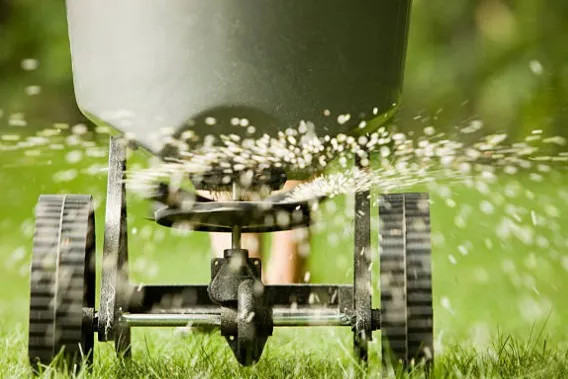
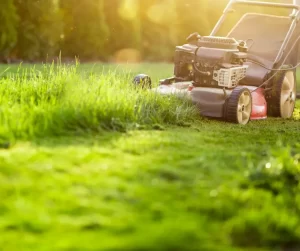
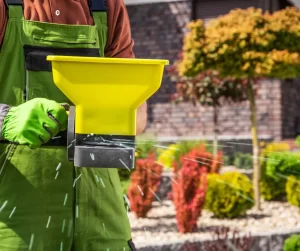
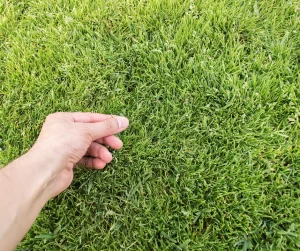
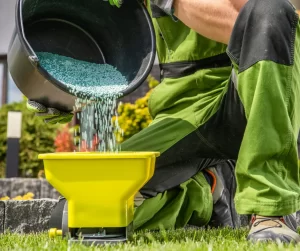

Recent Comments